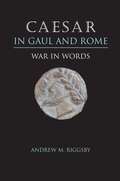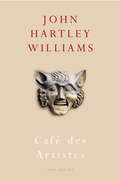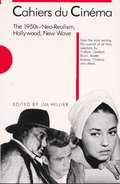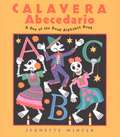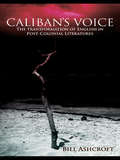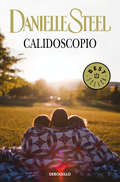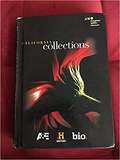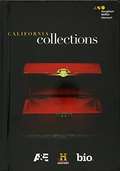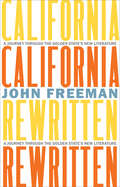- Table View
- List View
Cacaphonies: The Excremental Canon of French Literature
by Annabel L. KimExploring why there is so much fecal matter in literary works that matterCacaphonies takes fecal matter and its place in literature seriously. Readers and critics have too long overlooked excrement&’s vital role in the twentieth- and twenty-first-century French canon. In a stark challenge to the tendency to view this literature through sanitizing abstractions, Annabel L. Kim undertakes close readings of key authors to argue for feces as a figure of radical equality, both a literary object and a reflection on literature itself, without which literary studies is impoverished and sterile. Following the fecal through line in works by Céline, Beckett, Genet, Sartre, Duras, and Gary and the contemporary authors Anne Garréta and Daniel Pennac, Kim shows that shit, far from vanishing from the canon after the early modern period, remains present in the modern and contemporary French literature that follows. She argues that all the shit in the canon expresses a call to democratize literature, making literature for all, just as shit is for (or of) all. She attends to its presence in this prized element of French identity, treating it as a continually uttered desire to manifest the universality France aspires to—as encapsulated by the slogan Liberté, égalité, fraternité—but fails to realize. In shit there is a concrete universalism that traverses bodies with disregard for embodied differences. Cacaphonies reminds us that literature, and the ideas to be found therein, cannot be separated from the corporeal envelopes that create and receive them. In so doing, it reveals the aesthetic, political, and ethical potential of shit and its capacity to transform literature and life.
Caddy Compson (Major Literary Characters)
by Harold BloomThe character of Caddy Compson, a major character in Faulkner's work is carefully examined.
Caesar in Gaul and Rome: War in Words
by Andrew M. RiggsbyAnyone who has even a passing acquaintance with Latin knows “Gallia est omnis divisa in partes tres” (“All Gaul is divided into three parts”), the opening line of De Bello Gallico, Julius Caesar's famous commentary on his campaigns against the Gauls in the 50s BC. But what did Caesar intend to accomplish by writing and publishing his commentaries, how did he go about it, and what potentially unforeseen consequences did his writing have? These are the questions that Andrew Riggsby pursues in this fresh interpretation of one of the masterworks of Latin prose. Riggsby uses contemporary literary methods to examine the historical impact that the commentaries had on the Roman reading public. In the first part of his study, Riggsby considers how Caesar defined Roman identity and its relationship to non-Roman others. He shows how Caesar opens up a possible vision of the political future in which the distinction between Roman and non-Roman becomes less important because of their joint submission to a Caesar-like leader. In the second part, Riggsby analyzes Caesar's political self-fashioning and the potential effects of his writing and publishing the Gallic War. He reveals how Caesar presents himself as a subtly new kind of Roman general who deserves credit not only for his own virtues, but for those of his soldiers as well. Riggsby uses case studies of key topics (spatial representation, ethnography, virtus and technology, genre, and the just war), augmented by more synthetic discussions that bring in evidence from other Roman and Greek texts, to offer a broad picture of the themes of national identity and Caesar's self-presentation.
Caesar's English 1
by Michael Thompson Myriam ThompsonThe book has about twenty lessons, each introducing five new stems with an introductory Latin Stem List and other learning activities.
Caesar’s Dē Bellō Gallicō: A Syntactically Parsed Reader
by Jean-François R. Mondon<p>Caesar’s Dē Bellō Gallicō: A Syntactically Parsed Reader is an innovative Latin reader presenting selections of Caesar’s Gallic wars texts. Its unique approach tackles the two most common problems a student reading unedited Latin faces: abundant vocabulary and a maze-like sentence structure. Breaking down the sentence structure of the texts and providing vocabulary glosses throughout, A Syntactically Parsed Reader ensures better comprehension and enables students to make an easier transition from using artificial and doctored Latin to working with the unaltered language found in authentic texts. <p>Features include: <p> <li>Texts presented with the syntactically parsed Latin on one page and vocabulary glosses on the other <li>Visual display of the syntactic structure of each Latin sentence throughout, with main clauses touching the left margin, subordinate clauses shown indented, and multiple subordinate clauses arranged to illustrate which clauses are dependent on which other clauses <li>Helpful grammar notes provided alongside the texts <li>High frequency vocabulary included in a separate appendix to encourage efficient vocabulary acquisition <li>Selected texts carefully chosen in line with the Advanced Placement Latin exam. </li> <p> <p>Caesar’s Dē Bellō Gallicō: A Syntactically Parsed Reader has been developed by an experienced university instructor. It is ideal for students seeking to improve their ability to read and understand Latin prose straight from the page.</p>
Café des Artistes
by John Hartley WilliamsWelcome to the Café des Artistes. Your host, the owner, bartender, master of ceremonies and only other guest: John Hartley Williams. Here you will be entertained and diverted - by bizarre stories of mapless roads and unreal cities, the Ostrich Palisades and the erotic stones of Bonehenge; by a spooked version of Rimbaud's 'La Bateau Ivre'; by encounters with Malcolm Lowry, the floating dead, the 'old men behind the waterfall' and the knitted poet; by poems about donkey jackets and dancing with donkeys, and a one-sided conversation with a decidedly un-Romantic polar bear two doors down from Dove Cottage.Long celebrated for his ranging, restless imagination, his baroque, elliptical narratives, his manic humour and maverick stance, Williams returns with another invitation to join him for a jug or two of wine in his out-of-kilter universe: a world that is both strange, and strangely familiar. Welcome to the Café des Artistes!
Cahiers du Cinéma: The 1950s Neo-Realism Hollywood New Wave
by Jim HillierThe selections in this volume are drawn from the colorful first decade of Cahiers, 1951-1959, when a group of young iconoclasts racked the world of film criticism with their provocative views an international cinema--American, Italian, and French in particular.
Cake Wrecks: When Professional Cakes Go Hilariously Wrong
by Jen YatesNew York Times Bestseller: Stories and photos of confectionary calamities that “will have you laughing so hard you’ll forget to eat” (The Washington Post).Have your cake and laugh at it, too, with the sweet treat known as Cake Wrecks: When Professional Cakes Go Hilariously Wrong. From the creator of the award-winning blog, here are the worst cakes ever, including the ugly, the silly, the downright creepy, the unintentionally sad or suggestive, and the just plain funny. With witty commentary and behind-the-scenes tidbits, Cake Wrecks will ensure that you never look at a cake the same way again.Jen Yates’ CakeWrecks site was a winner of a Blogger’s Choice Award for Best Humor Blog, among other honors, and for this inspired and sidesplitting collection, she gathered extensive never-before-seen material to create “a hilarious winner” (The Oregonian).“I haven’t laughed so hard in ages.” —Mary Alice, from the Food Network’s Ace of Cakes“Think of them as epic fails, with frosting.” —TheNew York Times
Cake Wrecks: When Professional Cakes Go Hilariously Wrong
by Jen YatesNew York Times Bestseller: Stories and photos of confectionary calamities that “will have you laughing so hard you’ll forget to eat” (The Washington Post).Have your cake and laugh at it, too, with the sweet treat known as Cake Wrecks: When Professional Cakes Go Hilariously Wrong. From the creator of the award-winning blog, here are the worst cakes ever, including the ugly, the silly, the downright creepy, the unintentionally sad or suggestive, and the just plain funny. With witty commentary and behind-the-scenes tidbits, Cake Wrecks will ensure that you never look at a cake the same way again.Jen Yates’ CakeWrecks site was a winner of a Blogger’s Choice Award for Best Humor Blog, among other honors, and for this inspired and sidesplitting collection, she gathered extensive never-before-seen material to create “a hilarious winner” (The Oregonian).“I haven’t laughed so hard in ages.” —Mary Alice, from the Food Network’s Ace of Cakes“Think of them as epic fails, with frosting.” —TheNew York Times
Cake Wrecks: When Professional Cakes Go Hilariously Wrong
by Jen YatesNew York Times Bestseller: Stories and photos of confectionary calamities that “will have you laughing so hard you’ll forget to eat” (The Washington Post).Have your cake and laugh at it, too, with the sweet treat known as Cake Wrecks: When Professional Cakes Go Hilariously Wrong. From the creator of the award-winning blog, here are the worst cakes ever, including the ugly, the silly, the downright creepy, the unintentionally sad or suggestive, and the just plain funny. With witty commentary and behind-the-scenes tidbits, Cake Wrecks will ensure that you never look at a cake the same way again.Jen Yates’ CakeWrecks site was a winner of a Blogger’s Choice Award for Best Humor Blog, among other honors, and for this inspired and sidesplitting collection, she gathered extensive never-before-seen material to create “a hilarious winner” (The Oregonian).“I haven’t laughed so hard in ages.” —Mary Alice, from the Food Network’s Ace of Cakes“Think of them as epic fails, with frosting.” —TheNew York Times
Calavera Abecedario: A Day Of The Dead Alphabet Book
by Jeanette WinterEvery year Don Pedro and his family make papier-mâché skeletons, or calaveras, for Mexico's Day of the Dead fiesta. From the Angel and Doctor to the Mariachi and Unicornio, there's a special calavera for each letter of the alphabet. Come dance with them!Includes a glossary of Spanish words and an author's note.
Caliban's Voice: The Transformation of English in Post-Colonial Literatures
by Bill AshcroftIn Shakespeare’s Tempest, Caliban says to Miranda and Prospero: "...you taught me language, and my profit on’t Is, I know how to curse. " With this statement, he gives voice to an issue that lies at the centre of post-colonial studies. Can Caliban own Prospero’s language? Can he use it to do more than curse? Caliban’s Voice examines the ways in which post-colonial literatures have transformed English to redefine what we understand to be ‘English Literature’. It investigates the importance of language learning in the imperial mission, the function of language in ideas of race and place, the link between language and identity, the move from orature to literature and the significance of translation. By demonstrating the dialogue that occurs between writers and readers in literature, Bill Ashcroft argues that cultural identity is not locked up in language, but that language, even a dominant colonial language, can be transformed to convey the realities of many different cultures. Using the figure of Caliban, Ashcroft weaves a consistent and resonant thread through his discussion of the post-colonial experience of life in the English language, and the power of its transformation into new and creative forms.
Calidoscopio
by Danielle SteelUn terrible suceso trunca la vida de las tres hermanas Walker, separadas en la infancia y entregadas en adopción a distintas familias. Pero Hilary, la mayor y menos afortunada de las tres, preservará en su memoria su vida en común y alentará durante años la esperanza de, finalmente, volver a reunirse con ellas.
California Collections
by Houghton Mifflin HarcourtCalifornia Collections: A Grade 9 language arts textbook
California Collections, Grade 7
by Houghton Mifflin Harcourt StaffCalifornia Collections, Grade 7 a language arts textbook by Houghton Mifflin Harcourt.
California Dreams and American Contradictions: Women Writers and the Western Ideal
by Monique McDadeCalifornia Dreams and American Contradictions establishes a genealogy of western American women writers publishing between 1870 and 1965 to argue that both white women and women of color regionalized dominant national literary trends to negotiate the contradictions between an American liberal individualism and American equality. Monique McDade analyzes works by María Amparo Ruiz de Burton, Helen Hunt Jackson, Sui Sin Far, and a previously unstudied African American writer, Eva Rutland, to trace an archive of western American women writers who made visible what dominant genres subsumed under images of American progress and westward expansion. Read together these writers provide new entry points into the political debates that have plagued the United States since the nation&’s founding and that set the precedent for westward expansion. Their romances, regional sketches, memoirs, and journalism point to the inherently antagonistic relationship between a Rooseveltian rugged individualism that encouraged an Anglo male–dominated West and the progressive equality and opportunity the West seemingly promised disenfranchised citizens. The writers included in California Dreams and American Contradictions challenged literature&’s role in creating regional division, conformist communities that support nationally sponsored images of gendered, ethnic, and immigrant others, and liberal histories validated through a strategic vocabulary rooted in &“freedom,&” &“equality,&” and &“progress.&”
California Gateways [Anthology, Level 1B]
by Isabel L. Beck Margaret Mckeown Robin ScarcellaNIMAC-sourced textbook
California McDougal Littell Literature: American Literature
by Mcdougal LittellA language arts textbook
California My Perspectives English Language Arts, Grade 9, Volume Two
by PearsonCalifornia My Perspectives English Language Arts, Grade 9, Volume Two
California Rewritten: A Journey Through the Golden State’s New Literature
by John FreemanDive into the revelatory worlds of California's most exciting writers, and discover how their books uncover our history and can help us imagine our shared future."In Freeman's hands, California is a literary mecca, and each essay a revelation." —Ingrid Rojas Contreras, author of The Man Who Could Move CloudsPercival Everett, Rebecca Solnit, Tommy Orange, Michael Connelly, Julie Otsuka: As John Freeman writes in California Rewritten, "Literature of so many kinds and so many genres from so many different types of people—at the highest level—has been coming out of California and from Californians for decades now." Freeman, one of the sharpest editors working today, has followed the evolution of California's literary life since his teenage years in Sacramento. In over fifty essays inspired by his hosting of Alta Journal's popular California Book Club, he offers an essential road map to California literature now. He shows us how the state's most exciting writers can unlock our understanding of the past, and how they can deepen our imaginations as we confront the most pressing issues that face our society: labor and inequality, migration and citizenship, technology and its limits, changing landscapes and climate catastrophe. Incisive and compulsively readable, California Rewritten will be a source of empowering discovery for any book lover who cares about the Golden State.
California Treasures, English Language Development, My New Words, A Picture Word Book, Grades K-2
by Macmillan Mcgraw-HillNIMAC-sourced textbook
California Vistas: Family and Friends
by Kevin P. Colleary Ed. D. Stephen F. Cunha James A. Bank Jana Echevarria [et al.]A language arts textbook
California and the Melancholic American Identity in Joan Didion’s Novels: Exiled from Eden (Literary Criticism and Cultural Theory)
by Katarzyna Nowak McNeiceCalifornia and the Melancholic American Identity in Joan Didion’s Novels: Exiled from Eden focuses on the concept of Californian identity in the fiction of Joan Didion. This identity is understood as melancholic, in the sense that the critics following the tradition of both Sigmund Freud and Walter Benjamin use the word. The book traces the progress of the way Californian identity is portrayed in Joan Didion’s novels, starting with the first two in which California plays the central role, Run River and Play It As It Lays, through A Book of Common Prayer to Democracy and The Last Thing He Wanted, where California functions only as a distant point of reference, receding to the background of Didion’s interests. Curiously enough, Didion presents Californian history as a history of white settlement, disregarding whole chapters of the history of the region in which the Californios and Native Americans, among other groups, played a crucial role: it is this reticence that the monograph sees as the main problem of Didion’s fiction and presents it as the silent center of gravity in Didion’s oeuvre. The monograph proposes to see the melancholy expressed by Didion’s fiction organized into four losses: of Nature, History, Ethics, and Language; around which the main analytical chapters are constructed. What remains unrepresented and silenced comes back to haunt Didion’s fiction, and it results in a melancholic portrayal of California and its identity – which is the central theme this monograph addresses.The Open Access version of this book, available at http://www.taylorfrancis.com, has been made available under a Creative Commons [Attribution-Non Commercial-No Derivatives (CC BY-NC-ND)] 4.0 license.
Calila: The Later Novels of Carmen Martín Gaite (Campos Ibéricos: Bucknell Studies in Iberian Literatures and Cultures)
by Joan L. BrownCalila: The Later Novels of Carmen Martín Gaite explores the last six novels by Spain´s most honored contemporary woman writer. Its scholarship is enriched by the voice of Calila herself—as Brown called Martín Gaite, who was a dear friend—as they conversed and exchanged letters during the composition of the novels. The book opens with an introduction to Martín Gaite´s life and literature and ends with a consideration of her legacy. Each central chapter analyzes a later novel in its historical, biographical, and critical contexts. From the young adult fantasy Caperucita en Manhattan (Red Riding Hood in Manhattan) to the post-Transition epistolary masterpiece Nubosidad variable (Variable Cloud), the Transition-era saga La Reina de las Nieves (The Farewell Angel), the Proustian reminiscence Lo raro es vivir (Living’s the Strange Thing), the narrative tapestry Irse de casa (Leaving Home), and the memoir of family secrets Los parentescos (Family Relations), these fascinating novels evoke themes that resonate today.

